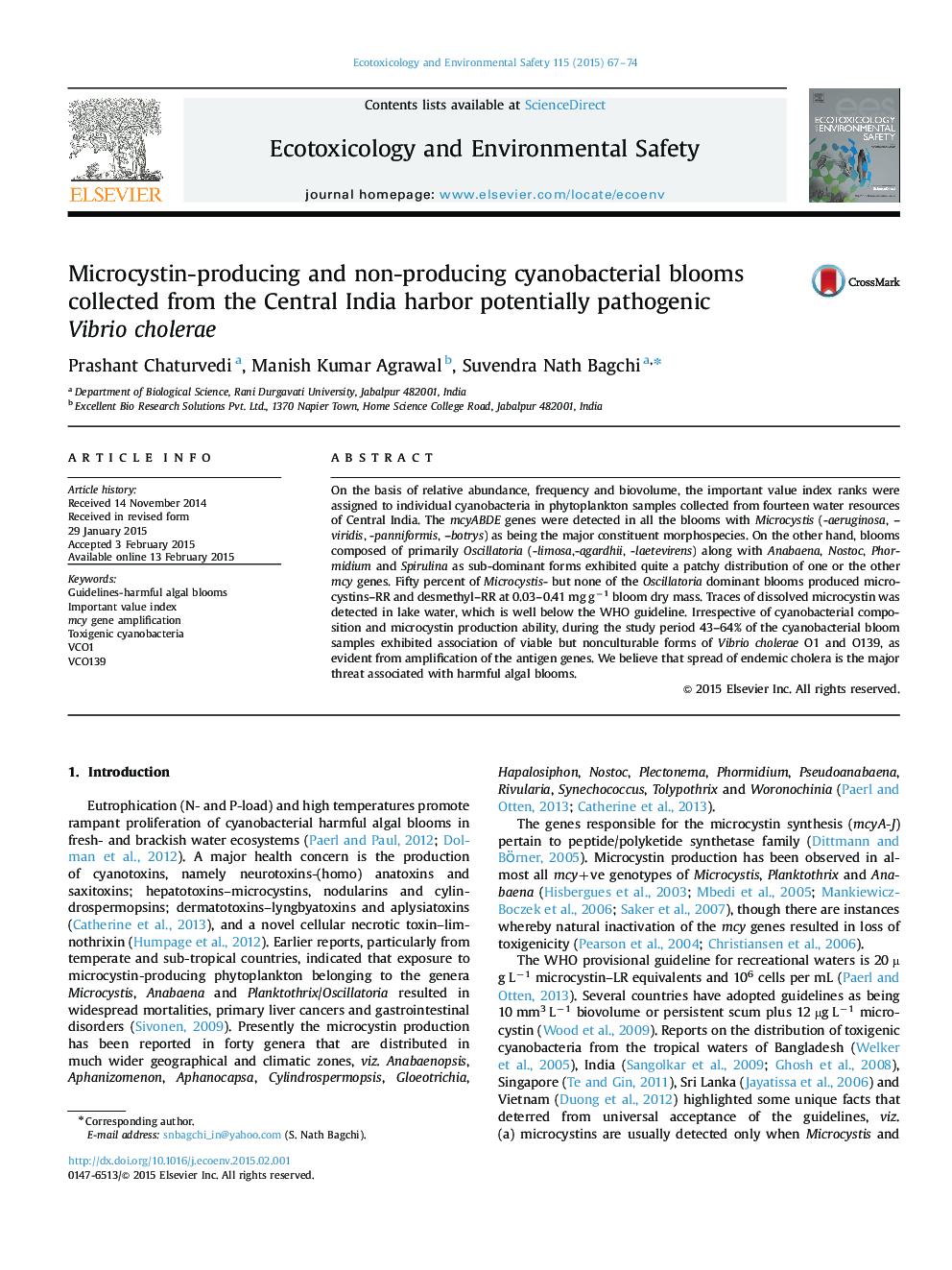| Article ID | Journal | Published Year | Pages | File Type |
|---|---|---|---|---|
| 4419758 | Ecotoxicology and Environmental Safety | 2015 | 8 Pages |
Abstract
On the basis of relative abundance, frequency and biovolume, the important value index ranks were assigned to individual cyanobacteria in phytoplankton samples collected from fourteen water resources of Central India. The mcyABDE genes were detected in all the blooms with Microcystis (-aeruginosa, -viridis, -panniformis, -botrys) as being the major constituent morphospecies. On the other hand, blooms composed of primarily Oscillatoria (-limosa,-agardhii, -laetevirens) along with Anabaena, Nostoc, Phormidium and Spirulina as sub-dominant forms exhibited quite a patchy distribution of one or the other mcy genes. Fifty percent of Microcystis- but none of the Oscillatoria dominant blooms produced microcystins-RR and desmethyl-RR at 0.03-0.41 mg gâ1 bloom dry mass. Traces of dissolved microcystin was detected in lake water, which is well below the WHO guideline. Irrespective of cyanobacterial composition and microcystin production ability, during the study period 43-64% of the cyanobacterial bloom samples exhibited association of viable but nonculturable forms of Vibrio cholerae O1 and O139, as evident from amplification of the antigen genes. We believe that spread of endemic cholera is the major threat associated with harmful algal blooms.
Related Topics
Life Sciences
Environmental Science
Environmental Chemistry
Authors
Prashant Chaturvedi, Manish Kumar Agrawal, Suvendra Nath Bagchi,
